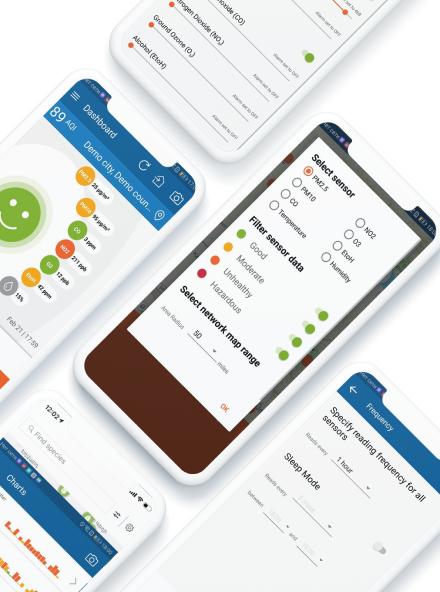
Why Security Review is a Must for a Successful Software Project
9 Nov 2021

With the ever-increasing number of software products flooding the market, corporations are looking for ways to make their software products stand out from the bulk. Cutting-edge features, advanced software performance, and increased functionality will no doubt speak for the forward-looking nature of your product. However, at the end of the day, its utmost quality will be determined by its level of security. Not to mention the fact that the post-pandemic increase in cyberattacks has doubly emphasized the critical need for proper security measures. And it is software vulnerability that helps hackers succeed in most of their “undertakings”, not firewalls or intrusion detection systems, as you may assume.
Secure Software Development Life Cycle
If you want to ensure the smooth processes and performance of your software, you need to incorporate all the required security measures into every stage of your software development life cycle (SDLC). This way most of your security issues will be resolved throughout the development process, way before production. Additionally, the risk of finding a security problem in your product after it has been deployed, will essentially decrease. Even if you do face such an issue in post-production, you can at least rest assured that it will have minimal impact.
A secure software development life cycle consists of the following stages:
Planning and Requirements Analysis: In this phase, pretty much every department of your company - executives, project managers, sales, marketing, industry experts, etc. - should join forces in order to come up with a well-thought-out project plan and requirements and check its feasibility. This will help you understand the usability of your project from economical, operational, and technical aspects. Quality assurance requirements can also be defined in this stage.
Architecture and Design: The architecture and design phase defines the way your software will work: from choosing the programming language and clarifying the overall design to user interface specifications and platform (Apple, Android, Windows, Linux) selection.
Test Planning: An inseparable part of a secure software development life cycle is test planning which should focus on the following important points:
- The testing strategy
- Resources to be used for testing
- Test environment
- Testing limitations
- Testing schedule
These tasks are usually carried out by the QA team lead.
Coding: This is when the actual software development starts. If the design and architecture processes were carried out properly, coding will go without many logistical issues. It’s imperative for developers to detect and fix all possible errors and glitches in this stage.
Testing and Results: Though this stage is usually mentioned separately, it’s worth mentioning that testing should be included in all the stages of a successful SDLC. This will guarantee a sustainable software development life cycle. At the same time, having a separate testing stage will help determine and effectively report all issues, track and fix them, and retest further to be sure everything functions as required.
Release and Regular Maintenance: As soon as you are done with testing and have achieved the desirable results, it’s time to release your product. The post-release stage requires constant checkups and maintenance. This is when the software is improved based on customer feedback.
SDLC Methodologies in the Post-Agile World
What do we mean by post-agile? Pretty much all SDLC methodologies that used to be prevalent in the market, have now gone out of use, except Agile.
Waterfall
With its origins going back to the 70s, the Waterfall method has been the standard for over 20 years. In fact, the SDLC phases we’ve described above were first introduced within the scope of the Waterfall method. Now they are adapted and used in modern methodologies.
The Waterfall method is quite rigid as it does not allow for any overlapping of the SDLC phases - they all have a specific order. No testing occurs before the actual Testing phase. Post-production changes are very slow and quite expensive. Besides, the lack of customer feedback in the design and development stage often results in the development of superfluous features and ends up racking up costs and wasting time. In its rigidity, the Waterfall method does not leave room for proper security measures.
Iterative
The Iterative model is the predecessor of Agile and revolves around the idea of “rinse and repeat.” This means that the teams use a set of software requirements initially then test and come up with further requirements. There are no definite requirements from the onset. Each iteration generates a new version of software until the final one that has the desired qualities and features. Each iteration has to undergo every SDLC phase.
Spiral
Just like the Iterative method, the Spiral model also goes through several repetitive phases. To be more precise, it repeats the following 4 phases over and over again:
- Planning
- Risk analysis
- Engineering
- Evaluation
This model enables the perfecting and polishing of the project until it meets all the initial expectations.
Agile
The origins of Agile methodology date back to the early 2000s. Nowadays, it’s mainstream. Agile is used not only for coding processes, but also for multiple aspects of product development, from concept creation to user experience.
With Agile, a project passes through several cycles, each of which have to undergo some or all SDLC phases. The idea behind Agile is the human-centered approach and teamwork which results in regular feedback, iterations and refinement.
Agile has a number of advantages:
- Faster software deployment and regular improvement
- A place for mid-project changes thanks to flexibility and adaptability
- No need for a strict list of requirements right from the onset
- Transparency and better collaboration with stakeholders
- Improved security throughout the whole SDLC
The Agile methodology is also much more flexible when it comes to the implementation of security measures throughout the development process.
Secure Software Development
Modern methodologies (Agile, Lean, DevOps) have put a special emphasis on security, and the integration of software development security principles is more important than ever. Here are three things to consider for a thorough, end-to-end security review of your software product:
Security Testing Throughout the Entire Development Process
A thorough security check starts at the very beginning of the software development life cycle and carries all the way through to deployment. This means adopting and sticking to a security testing methodology and a reliable action plan from early on.
An end-to-end approach to security testing starts with establishing a set of security requirements for the software before the start of its development and implementing it all the way through its architecture and design, QA testing, code review, and deployment.
Special Focus on Code Review
Shortening the software production life cycle is important for everyone, and code review can sometimes be time consuming. However, in the long run, it has a high ROI.
Having well-defined and in-depth code review processes will help you find out if all your requirements have been fully implemented, check for bugs, and decrease margins of error in your development process. Implementing the suggested improvements issued by a code review will result in the improved security of your software product.
Penetration Testing May Be Your Best Friend
Penetration testing may be the most common test run by software development companies and cybersecurity providers. However, running it throughout the entire production cycle may be the fastest way to identify security vulnerabilities and risks within the software product.
Integrating penetration testing into the software development life cycle means that vulnerabilities will be fixed during the product’s development process and that upon completion, your software solution will be safe, secure, and ready to be used.
Regular Software Security Updates
In order to outrun cybercriminals, we recommend that you follow these tips to ensure the security and invincibility of your software:
- Upgrade all your outdated security features.
- Identify and repair all vulnerabilities before hackers find out about them.
- Uncover malware or viruses in your systems to avoid data theft and breaches.
- Check the information flow with your clients and partners to protect them from viruses and cyberattacks as well.
Secure Software Development Framework
Well-known security frameworks are employed by many companies to help improve their software security practices. Here are some more quick tips based on the principles and processes of NIST Secure Software Development Framework:
- Prepare the Organization (PO): This means that teams, processes, and technology within a company should be aware of all the measures to be taken for a secure software development.
- Protect the Software (PS): No one outside the company should be able to access your software unless authorized to do so.
- Produce Well-Secured Software (PW): The product that is released into the market should have minimal vulnerabilities.
- Respond to Vulnerabilities (RV): Any vulnerabilities that are identified in the post-production phase, must be solved right away. Teams should ensure that they do not occur in the future.
What are the Risk Factors in Software Development?
The following list of risk factors in software development will additionally highlight the importance of security throughout the whole SDLC:
- Complex software systems that cause unsafe links and communication processes.
- Large, multi-level software projects that do not undergo appropriate quality assurance processes for the sake of faster production.
- Outsourced third-party integrations.
- Sophisticated cyberattacks. These are the ones where hackers pinpoint the minute flaws in your security system and use them to cause data breaches.
- Poorly upgraded legacy software.
- Negligent security culture (weak passwords, user-generated errors, etc.).
Parting Thoughts
Aside from integrating security measures into your SDLC, it goes without saying that you must have already secured your development infrastructure long before taking up on any project. This also refers to having safe information storage policies, human resource and supplier management, means of communication, business operations, office location, etc.
And keep in mind the words of Stéphane Nappo, Global Chief Information Security Officer at Société Générale International: “It takes 20 years to build a reputation and few minutes of cyber-incident to ruin it.”


